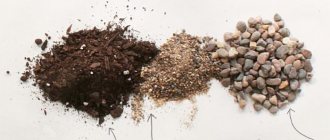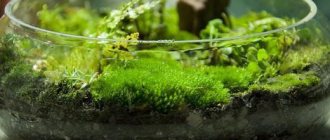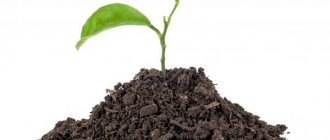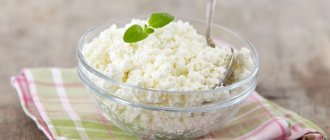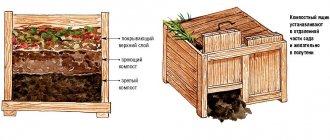What should be included
In both human and plant products, the composition is important. Lemons can bear fruit only if ideal care and planting conditions are met, the most important of which is the soil. To do this, you will need to figure out which one is needed specifically for lemon. It is recommended to mix the following types of soil.
garden soil
Suitable from a simple garden bed. Before use, it is cleaned, it is advisable to sift and bake in an oven. Makes up 30% of the entire mixture.
Leaf ground
Helps the plant become strong, bear fruit more quickly, and promotes vigorous growth. It is best to collect under the linden tree. Only the first five centimeters are taken. Roots and debris are removed. Add 20%.
Sod land
Nettles or clovers collected locally are ideal. Herbs create the optimal acidity needed by lemon. The earth is cleared of debris and roots. Add 20%.
Sand
The choice is made on coarse grain. Ideal - river or spring. Makes up 10% of the mixture.
Peat land
It perfectly absorbs excess moisture. Endowed with good air tightness. Thanks to this, the root system develops correctly, does not rot and is protected from drought. Accounts for 10% of the total volume.
Compost
The raw materials are fallen leaves, grass, straw, and leftover food. As a result of decomposition, a component rich in nutrients is obtained. Add 10%.
See also
Description of citron variety Hand of Buddha, rules of planting and care at homeRead
The compost should be fully matured, dark, homogeneous and easy to crumble. An unfinished product will destroy the plant .
It is also recommended to add manure humus. Best used for horses. You can get it at any farm or buy it through an advertisement.
DIY soil
In order to assemble a mixture suitable for this plant, it is necessary to include the following components:
- Garden land. This soil can be taken from an ordinary garden bed, but it is advisable to clear it of roots, weeds, large clods, grass and various debris.
- Lowland peat. Freely sold in garden stores. Before use, the peat is ventilated for 2-3 days. The amount of this raw material in the total soil mixture should not exceed 10%.
- Leaf humus. The best soil is collected near linden trees, but soil for lemon cannot be collected from under coniferous trees, oak and willow, as it contains a lot of tannins and acid. When collecting soil from under linden trees, the first 5 centimeters are removed, sifted to remove debris and weed roots, large clods, and then used. By the way, such soil is excellent for growing other indoor plants.
- Sod land. An excellent option in this case would be soil collected from the area where nettles grow. Soil from under meadow clover is also good. These soils contain the chemical compounds necessary for lemon and the optimal level of acidity. As a rule, they take the first 10 cm of soil and clear it of large lumps, weeds, grass and debris before use.
- Sand. The best sand for lemon is river sand or from a spring, but it is coarse-grained.
- Charcoal. Most often, alder or birch charcoal is used for mixing soil. Before mixing it with the other ingredients, it is important to crush the coal into powder. You can add a couple of tablespoons of crushed coal to one pot of plant.
- Dung humus. The best option is cattle and horse manure. You can find it on a farm that breeds such animals.
All ingredients, cleared of debris and other impurities, should be mixed until smooth. The following proportions are suitable for adult plants: one part each of peat, sand, turf soil and leaf humus. Young lemons require mainly turf soil and leaf humus - peat and sand can be taken only in small quantities.
Tip: the finished substrate should be stored in a cool place. It is best to prepare the mixture in one place and mix it in advance.
Recommended pH for citrus fruits
The acidity of the earth plays an important role in the formation of the plant. Citrus prefers:
- neutral soil, the acidity level of which is 6.5-7 pH;
- also likes less acidic (6 pH).
At home they check using a special device; litmus paper is also suitable. These devices can be purchased at any store that sells gardening tools.
What to look for when purchasing
When purchasing, choose soil for indoor plants that contains peat and neutral acidity. The ideal option is a special soil designed for lemons. It contains all the components necessary for the plant in the required proportions.
Also pay attention to:
- Expiration date, production date. The fresh product still retains useful substances and the microflora is less developed.
- Mineral components. There should be a ratio: one part nitrogen, one and a half parts phosphorus and two parts potassium.
- On soil particles. Packed lumps indicate poor quality.
The problem with ready-mixes is storage. They are sold tightly packed. If the substrate is wet, then the process of decomposition of plant components will continue, since a good environment for the life of bacteria is created. Lemon will not do well in such soil.
Which soil to choose for homemade lemon?
If you provide the tree with proper care, the lemon begins to bear fruit already in its 3rd year of life. But this happens when optimal conditions are created. The most important factor on which the growth of a tree depends is the quality of the soil. It is desirable that the soil for indoor lemon meets the following requirements:
- ease. The earth must allow oxygen and water to pass through. The lemon root system is not equipped with special hairs, so it is difficult for the plant to extract nutritional components from the soil;
- neutrality. Excessive acidity has a detrimental effect on the health of the planting and often causes death;
- homogeneity. Before replanting, it is recommended to first sift the soil so that there are no lumps in it, since they interfere with the absorption of nutrients.
Heavy soil, especially rich black soil, is not suitable for lemons.
This is due to the fact that in such soils moisture is distributed unevenly, which increases the likelihood of greenhouse processes. Under such conditions, the roots often dry out or begin to rot.
When deciding on the soil for transplanting a lemon, you need to consider how old the plant is. Young lemons need soil with a high content of sand and peat, while mature trees need heavier soil.
It is recommended to replant lemons every 2 years, but only during the dormant period, when the plant does not bloom or bear fruit.
Signs of quality soil
It is recommended to check even purchased special soil after purchase. For this:
- Moisten the lump of substrate with distilled water. Liquid passed through a filter is also suitable.
- Litmus paper is applied to the wet lump. The soil is suitable for use if it is green or yellow. This means the pH level is normal.
- Cannot be planted in alkaline soil. The paper will turn blue. Strongly acidic soil, which appears red, is harmful.
- Do not plant in soil containing petroleum products. To do this, a lump of earth is thrown into water and mixed. If a film or rainbow spots appear on the surface, the substrate is of poor quality.
Any soil can contain larvae and fungal spores invisible to the eye. Therefore, you should definitely keep it in the oven for a couple of hours.
See also
Why lemon leaves can curl and what to doRead
Rating of store mixes
There are various options for mixtures, the composition of which has a balanced structure. Their basis is peat. The product is completely ready for planting and there is no need for additives.
Buy:
- Fasco "Lemon". Contains nutritional elements in balanced amounts.
- Terra Vita "Universal". A balanced soil containing all the necessary components. Before use, they are calcined in an oven to avoid the appearance of a large number of worms.
- Gardens of Aurica "Gardenia". Ideal chemical composition. Incoming components: sand, earth, broken brick. Plus, you don’t need to purchase additional drainage.
- Peat soil “For citrus fruits”. . To preserve the structure, it contains a large-pored baking powder.
- Botanist's Dream "Lemon". Ideal ratio of microelements. Contains the required level of acidity.
- "Garden of Miracles". Contains essential minerals. You will have to add river sand before use. It can be purchased separately or prepared independently. Before adding it, it is washed and dried.
The right soil will provide a highly decorative appearance to the plant, accelerate development, and help it grow faster.
How to prepare soil for lemon yourself
A self-prepared mixture is many times better in quality. To do this, mix:
- washed and dried sand;
- forest land, not suitable from under coniferous trees;
- turf, take only the first 5 centimeters;
- humus, it must be completely ready;
- drainage is also added.
Before use, the homemade mixture is sifted.
For young plants it is enough to prepare from:
- turf soil;
- leaf humus;
- sand will be needed in small quantities;
- peat is also used in small quantities.
Prepare and mix the mixture at home in advance. Store in a cool place. A basement is ideal. Available as needed.
It is useful to add dolomite to the composition. It is sold in the form of flour. This helps reduce acidity in the peat substrate.
What kind of soil does this fruit like?
- The soil should be loose and airy. The root system of the plant does not have hairs, so it is difficult for the lemon to get nourishment from the ground.
- The mixture should be homogeneous without large earthen lumps that prevent adequate nutrition of the roots.
- The soil for lemons, including indoor ones, must contain the required amount of nutrients. One of the reasons for poor-quality or incorrectly selected soil may be a deficiency of nutrients.
Pay attention to our recommendations!
Signs of nutritional deficiencies
- A lack of nitrogen manifests itself in changes in leaf color and stunting of plant development. This is especially noticeable in the spring, when the period of active growth begins.
- A lack of phosphorus leads to the fact that after abundant flowering, not a single lemon blossom appears on the plant. With a constant deficiency of this mineral, the foliage turns black and falls off.
- Lack of potassium . If the leaves become colorless, the edges have changed color and have withered - this is a sure sign of potassium deficiency. The plant weakens, becomes lethargic, lemons take a long time to ripen. If we don’t sound the alarm in time, we will lose all the foliage.
- Calcium deficiency interferes with the development of the root system. The supply of nutrients is difficult. In addition, the upper shoots of citrus are damaged.
If everything is in order with the nutrients, there are cases that the lemon tree has a deficiency of microelements. The first symptoms of this phenomenon are light spots on the leaves. Later the leaves may fall off.
Acidity
What acidity is needed for normal plant life? The level should be neutral with a pH of 5.5-7. High levels of acidity will cause plant disease.
Ideal composition
With humus
- The sand is coarse-grained.
- Leaf soil.
- Sod land.
- Humus.
Recommended proportions : to 0.5 part sand, 1 part of the remaining components.
With manure
- Soil from the garden.
- Peat.
- Leaf humus.
- Sand with large fractions.
- Manure.
Choosing drainage for the plant
Before planting, be sure to purchase drainage. It will protect the root system from excessive waterlogging. Suitable for these purposes:
- crushed stone;
- fragments of clay dishes;
- expanded clay is created artificially, obtained by firing clay rock, sold in the form of balls, laid out on the bottom of the container;
- broken red brick;
- river pebbles.
The necessary ready-made material can be purchased at any flower shop along with a special primer.
Transplanting a tree
I advise you to replant the lemon on the 10th of February. Let's look at the process itself.
- You need to lay a drainage layer at the bottom of the pot, add a little sand and soil mixture.
- The root system should be inspected for rot and other damage. If you see that something is wrong with the roots, correct them, dry the earthen ball.
- To ensure that the tree takes root well in a new location, treat the roots with a growth stimulant (the most popular drug is Kornevin).
- You will need to make a small depression in the soil mixture, then replant the plant along with the earthen lump. The root collar should be at ground level.
- Next, you will need to compact the planting, add soil mixture and compact it again. There should be no air bubbles!
- At the final stage, you will need to water the lemon with settled water and gently loosen the soil.
Picking a lemon is not as difficult as it might seem at first glance!

